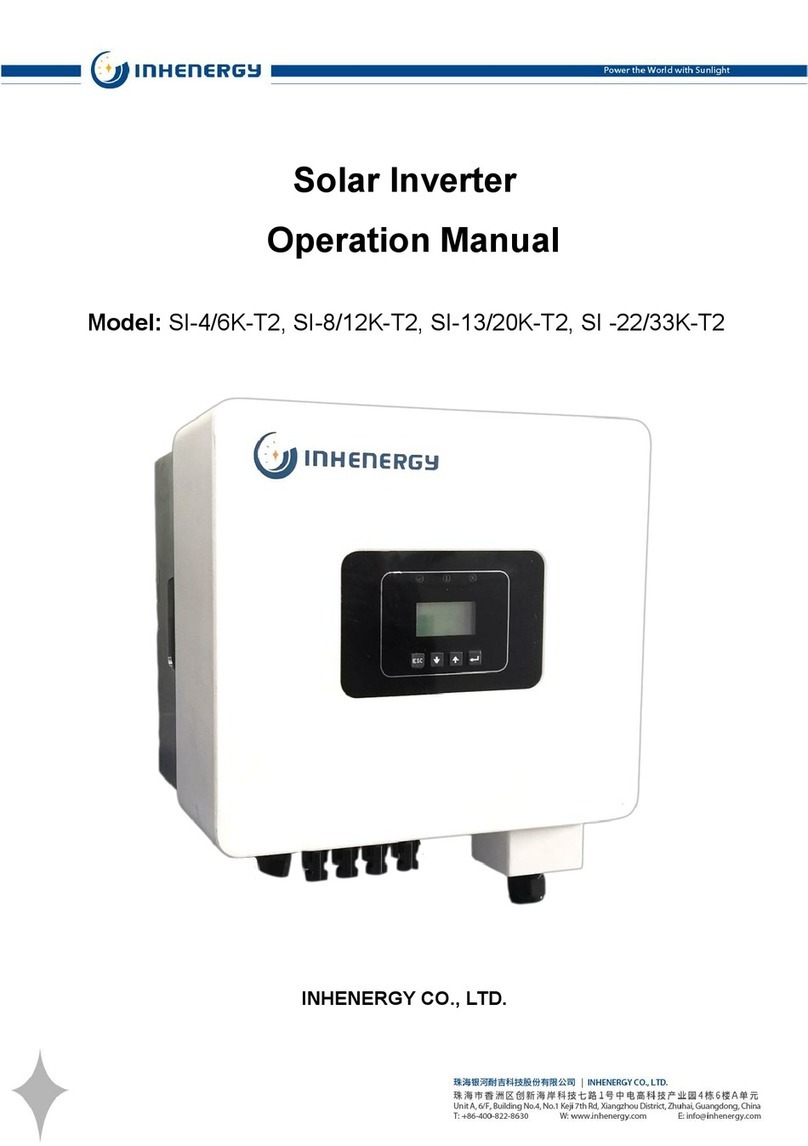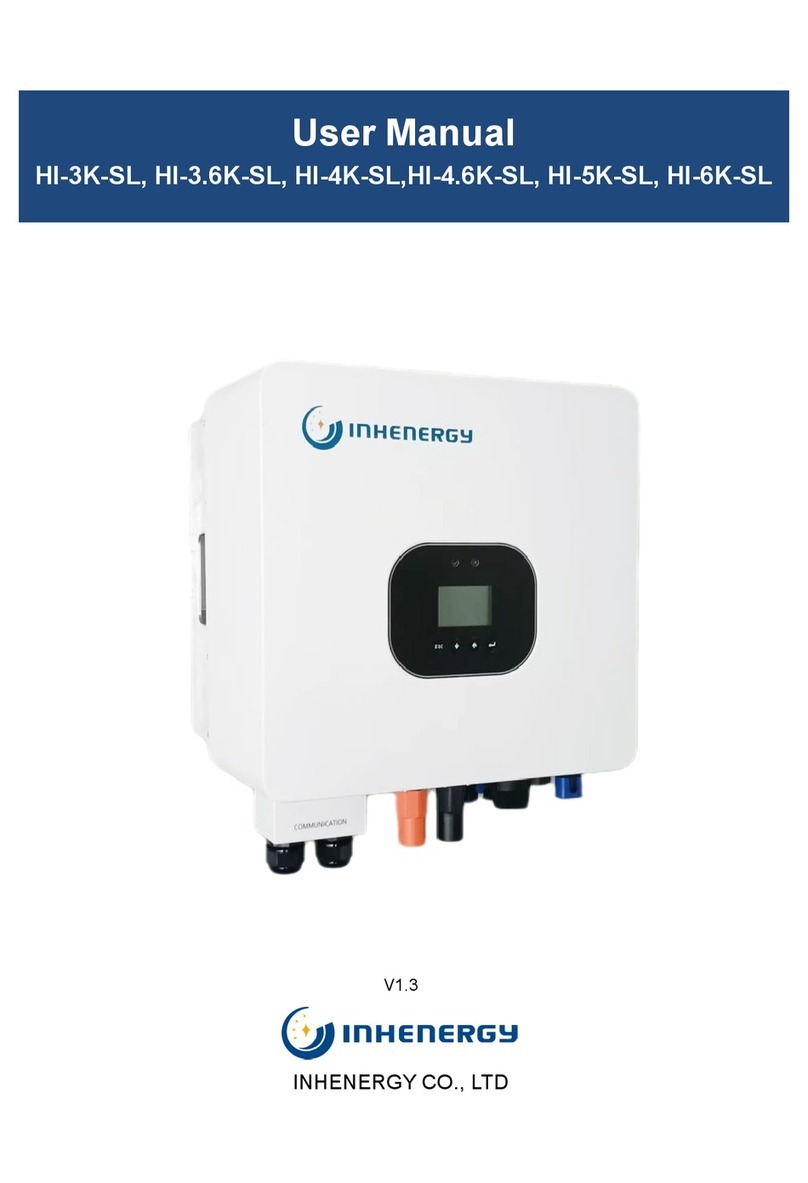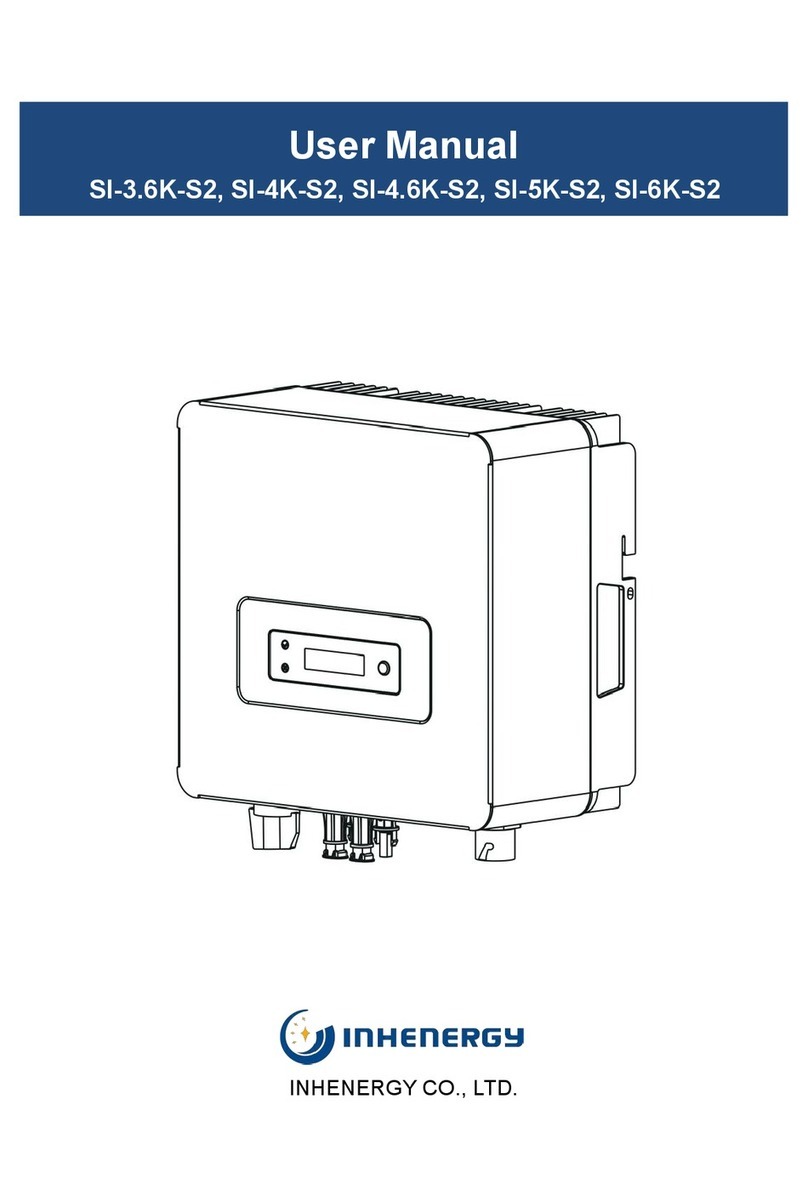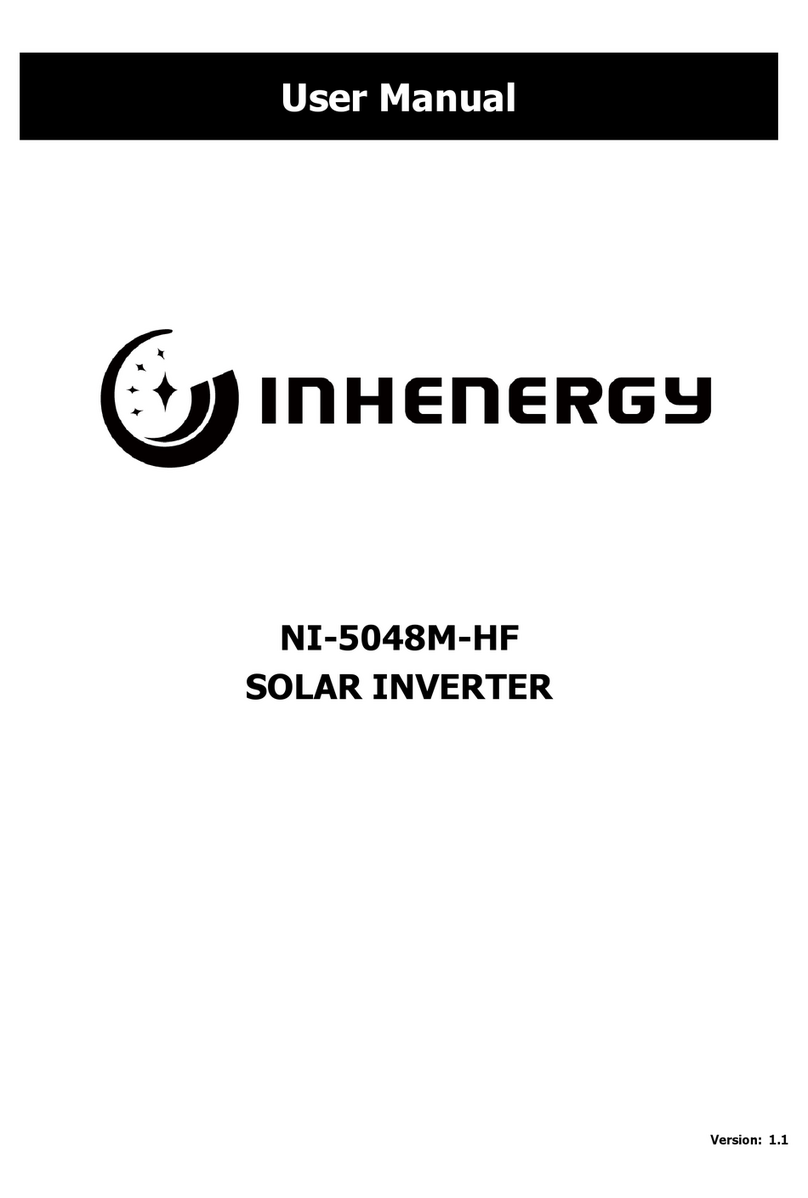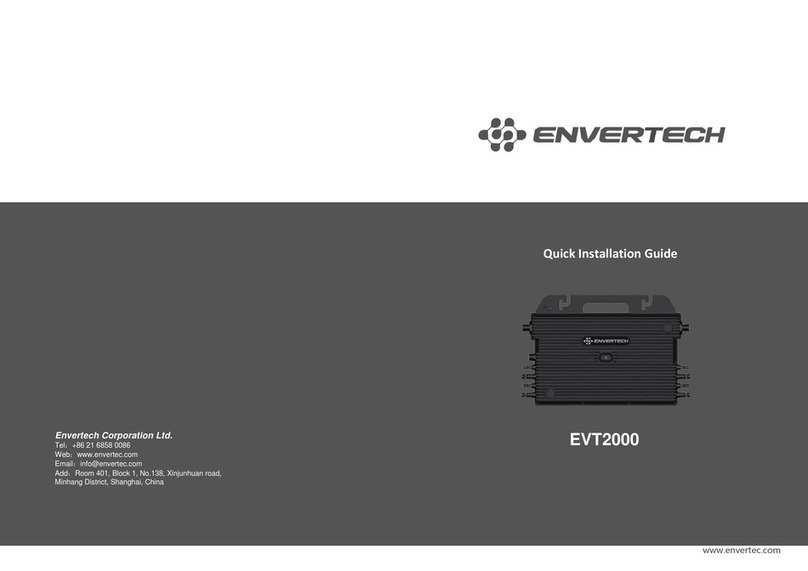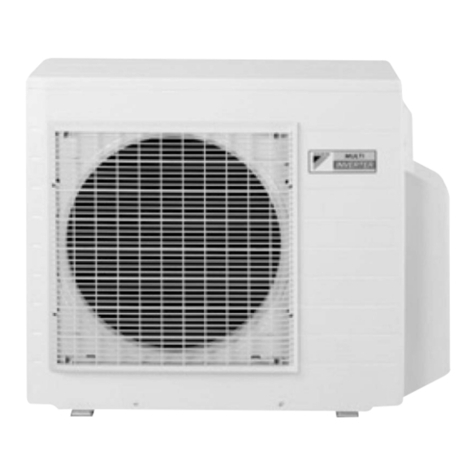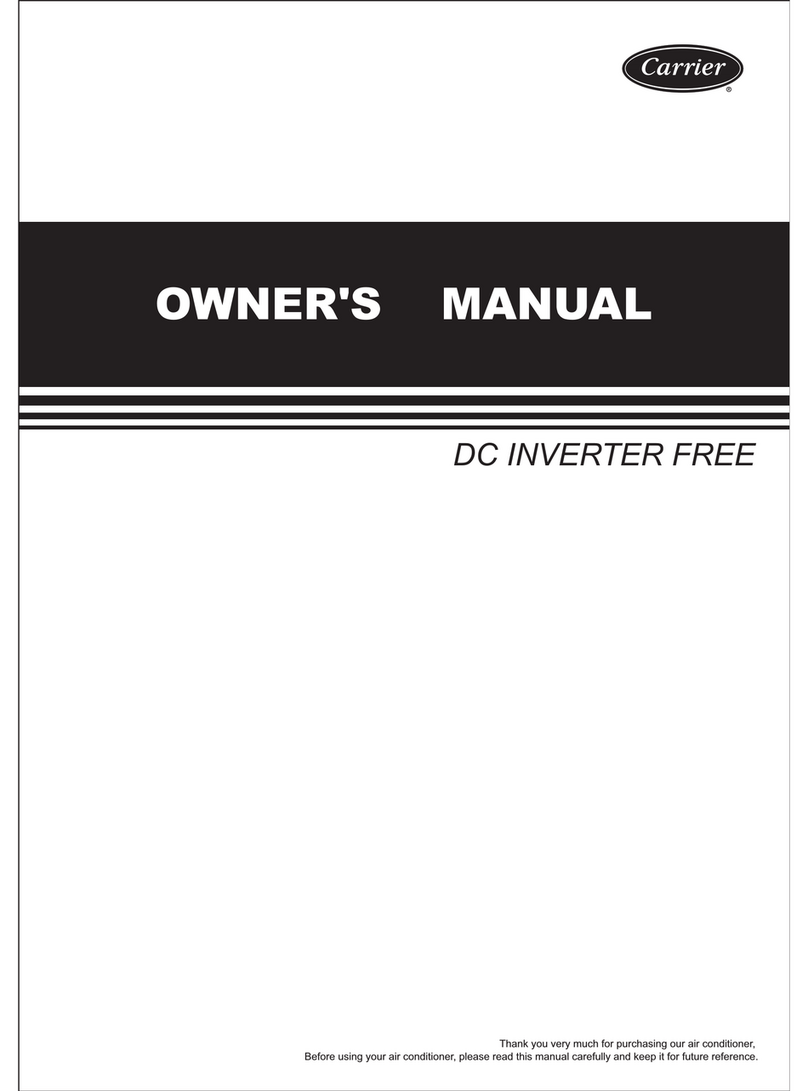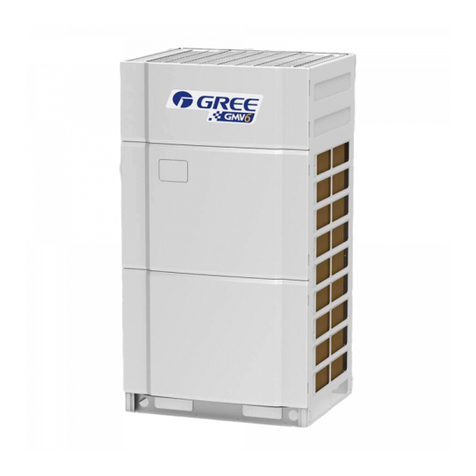INHENERGY SI 50K User manual

INHENERGY CO., LTD.
User Manual
SI 50K, SI 60K, SI 70K, SI 80K

-1-
CONTENTS
1 NOTES ON THIS MANUAL.......................................................................................................- 3 -
1.1 VALIDITY.................................................................................................................................. - 3 -
1.2 SYMBOLS IN THIS DOCUMENT.........................................................................................- 3 -
2 OVERVIEW.....................................................................................................................................- 4 -
2.1 PRODUCT INTRODUCTION................................................................................................ - 4 -
2.2 APPEARANCE......................................................................................................................... - 5 -
3 INSTALLATION.............................................................................................................................- 6 -
3.1 CHECK FOR PHYSICAL DAMAGE...................................................................................... - 6 -
3.2 PACKING LIST......................................................................................................................... - 6 -
3.3 MOUNTING.............................................................................................................................- 7 -
3.4 SPACE REQUIREMENT..........................................................................................................- 9 -
3.5 MOUNTING STEPS................................................................................................................- 9 -
4 ELECTRICAL CONNECTION...................................................................................................- 10 -
4.1GRID CONNECTION............................................................................................................ - 10 -
4.2 PV CONNECTION................................................................................................................- 11 -
4.3 485 CONNECTION..............................................................................................................- 13 -
4.4 TURN-OFF THE INVERTER................................................................................................ - 14 -
5 POWERING ON THE SYSTEM...............................................................................................- 14 -
5.1 START-UP THE INVERTER................................................................................................. - 14 -
5.2 FIRST RUN TIME SETTING................................................................................................ - 14 -
6 LCD OPERATION....................................................................................................................... - 14 -
7 MAINTENANCE AND CLEANING....................................................................................... - 16 -
7.1 MAINTAIN PERIODICALLY................................................................................................ - 16 -
7.2 TROUBLE SHOOTING.........................................................................................................- 16 -

User Manual
-2-
8 DECOMMISSIONING...............................................................................................................- 16 -
8.1 REMOVE THE INVERTER....................................................................................................- 18 -
8.2 PACKAGING.......................................................................................................................... - 18 -
8.3 STORAGE AND TRANSPORTATION................................................................................- 18 -
9 TECHNICAL DATA.....................................................................................................................- 18 -
10 MANUFACTURER WARRANTY..........................................................................................- 18 -
11 CONTACT.................................................................................................................................. - 20 -

-3-
1 Notes on this manual
1.1 Validity
This manual describes the assembly, installation, commissioning and maintenance of
the following Inhenergy Inverter model:
SI 50K
SI 60K
SI 70K
SI 80K
Target Group
This manual is for qualified personnel. Qualified personnel have received training and
have demonstrated skills and knowledge in the construction and operation of this
device. Qualified Personnel are trained to deal with the dangers and hazards involved in
installing electric devices.
Additional information
Find further information on special topics in the download area at www.inhenergy.com
The manual and other documents must be stored in a convenient place and be available
at all times. We assume no liability for any damage caused by failure to observe these
instructions. For possible changes in this manual, Inhenergy Co., Ltd. accepts no
responsibilities to inform the users.
1.2 Symbols in this document
Please pay close attention to all the symbols for the purpose of avoiding possible personal
injury or equipment break down.
Symbol
description
DANGER indicates a hazardous situation which, if not
avoided, will result in death or serious injury.
WARNING indicates a hazardous situation which, if not
avoided, could result in death or serious injury.

User Manual
-4-
Markings on this product
2 Overview
2.1 Product Introduction
Function
CAUTION indicates a hazardous situation which, if not
avoided, could result in minor or moderate injury.
NOTICE is used to address practices not related to personal
injury
Information that you must read and know to ensure
optimal operation of the system.
Symbol
Explanation
Caution,risk of electric shock
Caution,hot surface
Operation after 5 minutes
Read the manual
Point of connection for grounding protection
CE mark.
The inverter complies with the requirements of the
applicable CE guidelines.
The inverter must not be disposed of with the household
waste.

User Manual
-5-
The Inverters is a three-phase grid-tied PV string inverter that converts the DC power
generated by PV strings into AC power and feeds the power into the power grid.
Models
This document involves the following product models:
SI 50K,SI 60,SI 70K,SI 80K;
Model description (,SI 80K is used as an example)
Model description
2.2 Appearance
1.LED indicator 2. LCD display 3. Function button 4. DC switch
5.DC input terminals (PV1) 6. DC input terminals (PV2) 7. DC input terminals (PV3)
8. DC input terminals (PV4) 9. GPRS/WIFI output port 10.Communication port (RS485)
11. AC output port
Icon
Meaning
Description
1
Product
the grid-tied PV string inverter
2
Power level
50K :The rated power is 50 kW.
60K :The rated power is 60 kW.
70K :The rated power is 70 kW.
80K :The rated power is 70 kW.

User Manual
-6-
LED indicator description
Function button description
3 Installation
3.1 Check for Physical Damage
Make sure the inverter is intact during transportation. If there is any visible damage,
such as cracks, please contact your dealer immediately.
3.2 Packing List
Open the package and take out the product, please check the accessories first.
The packing list shown as below.
Category
Status
Meaning
Blinking green at short intervals
waiting status
Blinking green at long intervals
Self-check
Steady green
normal status
Steady yellow
Alarm
Off
No alarm
Blinking red at short intervals
Fault
Off
faultless
Category
Description
ESC button: Return from current interface or function.
Down button: Move cursor to downside or decrease
value
Up button: Move cursor to upside or increase value.
OK button: Confirm the selection.

User Manual
-7-
*C : SI 50K PV connectors (9*positive,9*negative);
SI 60K /70K PV connectors (12*positive,12*negative);
SI 80K PV connectors (16*positive,16*negative);
*D: SI 50K PV pin connectors (5*positive,5*negative);
SI 60K /70K PV pin connectors (12*positive,12*negative);
SI80K PV connectors (16*positive,16*negative);
3.3 Mounting
Installation Precaution
SI 80K series inverter is designed for outdoor installation (IP 65).
Make sure the installation site meets the following conditions:
Object
Description
Quantity
A
Inverter
1
B
Bracket
1
*C
PV connectors (16*positive,16*negative)
16/16
*D
PV pin connectors (16*positive, 16*negative)
16/16
E
Ring terminal
6
F
User manual
1
G
Expansion screws
5
H
Set screw( for mounting,external enclosure grounding)
3
I
Cable gland for AC connection
1
J
RS485 terminal (optional)
1
K
Wifi module (optional)
1

User Manual
-8-
◆ Not in direct sunlight.
◆ Not in areas where highly flammable materials are stored.
◆ Not in potential explosive areas.
◆ Not in the cool air directly.
◆ Not in environment of precipitation or humidity (>95%).
◆ Under good ventilation condition.
◆ The ambient temperature in the range of -20℃ to +60℃.
◆ The wall hanging the inverter should meet conditions below:
1.Solid brick/concrete, or strength equivalent mounting surface;
2.Inverter must be supported or strengthened if the wall’s strength isn’t enough(such
as wooden wall, the wall covered by thick layer of decoration).
Please avoide direct sunlight, rain exposure, snow laying up during.
◆ The slope of the wall should be within 80°.

User Manual
-9-
3.4 Space Requirement
3.5 Mounting Steps
1.Use the wall bracket as a template to mark the position of the 5holes on the wall.
2.Drill holes with driller, make sure the holes are deep enough (at least 75mm) for
installation, and then tighten the expansion tubes.
3. Install the expansion tubes in the holes, and tighten them. Then install the wall
bracket by using the expansion screws.(Φ10 driller, torque: 2.5±0.2Nm)
4. Hang the inverter over the bracket, move the inverter close to it, slightly lay down the
inverter, and make sure the 4 mounting bars on the back are fixed well with the 4
grooves on the bracket.
5.After confirming the inverter is fixed reliably, fasten two M5 safety-lock sockets head
cap screws on the right or left side firmly to prevent the inverter from being lifted off the
bracket (torque: 2.0±0.2Nm)

User Manual
- 10 -
4 Electrical Connection
4.1Grid Connection
SI 80K series inverter are designed for three-phase grid. Voltage is 400V, frequency is
50/60Hz. Other technical requests should comply with the requirement of the local
public grid.Micro-breaker should be installed between inverter and grid, any load
should not be connected with inverter directly.
Table 3 Cable recommended
Model
Copper Cable
Conductor crosssection
SI 50K/SI 60K
Five-core cable
(L/N/PE)
2 AWG
SI 70K/SI 80K
Five-core cable
(L/N/PE)
1 AWG

User Manual
- 11 -
Connection Steps
1. Choose the appropriate wire(Cable size: refer to Table3).
2.Remove 10mm of insulation from the end of wire.
3.Insert stripped wires into AC terminal and ensure that all conductor strands are
captured in the AC terminal.Compress the terminal head by using a crimping pliers .
4. Remove the protection shell onto the bottom of the inverter
5.Insert AC cable into port through screw cap and then tighten the screw cap.
6.Fasten the protection shell onto the bottom of the inverter, make sure the four screws
aretightened
4.2 PV connection
◆ Conditions for DC Connection
The inverter has 4 independent input : PV1\PV2\ PV3\PV4. Notice that the connectors
are in paired (male and female connectors). The connectors for PV arrays and inverters
are H4 connectors;
The solar modules connected to the inverter must conform to the
Class A requirements of the IEC 61730 standard.
If the inverter is not equipped with a DC switch but this is mandatory in the
country of installation, install an external DC switch.The following limit values at
the DC input of the inverter must not be
exceeded:
Model
Max current
PV1
Max current
PV2
Max current
PV3
Max current
PV4

User Manual
- 12 -
◆ Connecting the PV Array
Connection Steps:
1.Choose the 12 AWG wire to connect with the cold-pressed terminal.
2.Remove 7mm of insulation from the end of wire.
3.Insert the insulation into pin contact and use crimping plier to clamp it.
4.Insert pin contact through the cable nut to assemble into back of the male or female
plug. When you feel or heard a “click” sound the pin contact assembly is seated
correctly.
5. Plug the PV conntector into the corresponding PV connector on inverter.
SI 50K
SI 60K
SI 70K
SI 80K
33A
44A
33A
44A
33A
44A
33A
44A
33A
44A
33A
44A
/
/
33A
44A
Danger to life due to lethal voltages!
◆ PV array supplies d.c voltage to inverter when exposed to
light,before connecting the PV array, cover some light screens above
PV arrays,ensure that the DC switch and AC breaker are disconnect
from the inverter. NEVER connect or disconnect the DC connectors
under load.
◆ Make sure the maximum open circuit voltage(Voc) of each PV
string is less than the maximum input voltage of the inverter.
◆ Check the design of the PV plant. The Max. open circuit voltage,
which can occur at solar panels temperature of -10℃, must not
exceed the Max. input voltage of the inverter.
◆ Improper operation during the wiring process can cause fatal
injury to operator or unrecoverable damage to the inverter. Only
qualified personnel can perform the wiring work.
◆ Please don’t connect PV array positive or negative pole to the
ground, it couldcause serious damages to the inverter
◆ Check the connection cables of the PV modules for correct polarity
and make sure that the maximum input voltage of the inverter is not
exceeded

User Manual
- 13 -
4.3 485 Connection(Optional)
◆ 485 is provided the function of remote control that allows external control device to
make the inverters remote cluster control through 485 port on the inverter.
Connection Steps:
1.Uninstall the parts of the connection plug from the accessory bag.
2.Prepare communication cable,trip the insulation from the communication cable.
3.Let the communication cable pass though the waterproof connector , then insert it
into the connector following the PIN definition rule.
4.Fasten the protection shell onto the bottom of the inverter, make sure the four
screws are tightened, the completed appearance is like the below figure.
◆ When routing the signal cable, ensure that it is separate from the
power cable and away from interfering sources to prevent
communication from being affected.
◆ The protection layer of the cable is in the connector. Cut off surplus
core wires from the protection layer. Ensure that the core wires are
completely inserted into the cable holes, and that the cable is securely
connected.

User Manual
- 14 -
4.4 Turn-off the Inverter
Turn-off the inverter step:
1.Disconect the line circuit breaker from single-phases grid and prevent it from being
reactivated.
2.Turn off the dc switch.
3.Check the inverter operating status.
4.Waiting until LED, OLED have go out, the inverter is shut down.
5 Powering On the System
5.1 Start-Up the inverter
1.Turn on the AC switch between the inverter and the power grid.
2. If there is a DC switch between the PV string and the inverter, turn on the DC switch.
3. Turn on the DC switch at the bottom of the inverter.
4. Observe the LEDs to check the operating status of the inverter.
5.2 First run time setting
6 LCD Operation
The main interface is the default interface, the inverter will automatically jump to this
interface when the system started up successfully or not operated for a period of time.
Menu interface
Do not disconnect the DC connectors under load.
Before turning on the AC switch between the inverter and
the power grid, use a multimeter set to the AC position to
check that the AC voltage is within the specified range.

User Manual
- 15 -

User Manual
- 16 -
7 Maintenance and Cleaning
7.1 Maintain Periodically
1.Checking Heat Dissipation
If the inverter regularly reduces its output power due to high temperature, please
improve the heat dissipation condition. Maybe you need to clean the heat sink.
2. Cleaning the Inverter
If the inverter is dirty, turn-off the AC breaker and DC switch ,waiting the inverter shut
down ,then clean the enclosure lid, the display, and the LEDs using only a wet cloth. Do
not use any cleaning agents (e.g. solvents or abrasives)
3. Checking the DC switch
Check for externally visible damage and discoloration of the DC switch and the cables at
regular intervals.If there is any visible damage to the DC switch, or visible discoloration
or damage to the cables, contact the installer.
7.2 Trouble shooting
Our quality control program assures that every inverter is manufactured to accurate
specifications and is thoroughly tested before leaving our factory. If you have difficulty
in the operation of your inverter, please read through the following information to
correct the problem.
Alarm ID
Alarm Name
Suggestion
Alarm ID
Alarm Name
Suggestion
E00
Grid Volt Low
Check the AC
voltage range
E16
Remote Off
Check
background
instructions
E01
Grid Volt High
E18
SPI Error
Contact the
manufacturer
E02
Grid Freq Low
E20
GFCI High
E03
Grid Freq High
E21
GFCI Chk Error
E04
Bus Volt Low
Please switch off
DC switch.
Restart the invert
E22
Vol Not Same
E05
Bus Volt High
E23
Curr Not Same
E06
Bus Imbalance
E26
Soft start erro

User Manual
- 17 -
E07
ISO Low
Check PV
impedance to
ground
E27
PV Voltage
High
Check the PV
panel
configuration
E08
DC Curr High
Check the PV
panel
configuration
E32
DSP Comm.
Error
Please switch
off DC switch.
Restart the
invert
E09
Hw Invert High
Contact the
manufacturer
E10
Invert I High
E11
Invert DCI High
E12
Env T High
E13
Radiator Heat
E14
AC Contactor
E15
PV Voltage Low
Check the PV
panel
configuration
Alarm ID
Alarm Name
Suggestion
Alarm
ID
Alarm Name
Suggestion
W16
Clock Warn
Replace the
internal button
pool
W05
Fan 1 Speed Low
Check the
external fan
W03
Active 0
Warn
Normal
shutdown at
low power
W06
Fan2 Speed Low
W04
Array Warn
Check the PV
panel
W07
Fan 3 Speed Low
W21
Arrester
Warn
Check the
lightning
arresters
W08
Fan 4 Speed Low

User Manual
- 18 -
8 Decommissioning
8.1 Remove the Inverter
◆ Disconnect the inverter from DC Input and AC output.
◆ Wait for 5 minutes for de-energizing.
◆ Disconnect communication and optional connection wirings.
◆ Remove the inverter from the bracket.
◆ Remove the bracket if necessary.
8.2 Packaging
◆ Please pack the inverter with the original packaging.
◆ If the original package is no longer available, you can also use an equivalent carton
that meets the following requirements.
8.3 Storage and Transportation
◆ Store the inverter in a dry environment where ambient temperature keep always
between -20 °C - +60 °C. Take care of the inverter during the storage and
transportation,keep less than 4 cartons in one stack.
◆ When the inverter or other related components need to be disposed. Have it carried
out according to local waste handling regulations. Please be sure to deliver wasted
inverters and packing materials to certain site, where can assist relevant department
to dispose and recycle.
9 Technical Data
Model
SI 50K
SI 60K
SI 70K
SI 80K
Input Data
Max. DC input power
60KW
75KW
85KW
100KW
Max. DC input voltage
1100V
Operation voltage range
200V-1000V
Number of independent
MPPT/strings per MPPT
3/3
3/4
4/3
4/4
MPPT max. current
33A*3
44A*3
33A*4
44A*4

User Manual
- 19 -
AC Output Data
Rated output power
50KW
60KW
70KW
80KW
Max. output power
55KW
66KW
77KW
88KW
Rated output voltage
400V ±20%
Rated output frequency
50 /60 Hz± 5 Hz
Rated output current
72A
87A
101A
115A
Max. output current
80A
95A
111A
128A
Power factor
+-0.8
THDi
<3%
Grid system pattern
3W+N+PE
Efficiency
Max. efficiency
99%
Europe efficiency
98.5%
General Data
Dimensions(W/L/H)in mm
690/640/296
690/640/296
Weight
≤60kg
≤68kg
Operation temperature
range
–25 °C ... +60 °C
Noise
≤60dB
Heat dissipation mode
Smart cooling
IP Class
IP65
Features
LCD display
yes
Communication interface
WiFi/GPRS/RS485
This manual suits for next models
3
Table of contents
Other INHENERGY Inverter manuals
Popular Inverter manuals by other brands
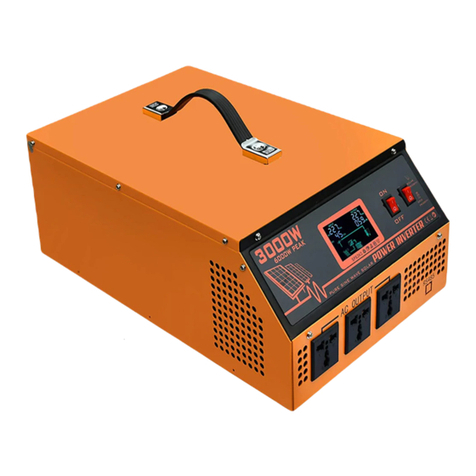
ECO-WORTHY
ECO-WORTHY 3000W user manual
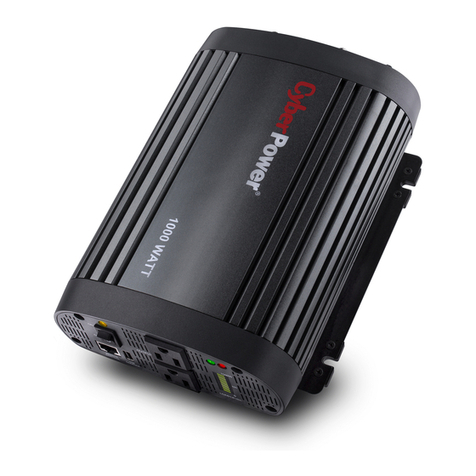
CyberPower
CyberPower CPS1000AI user guide
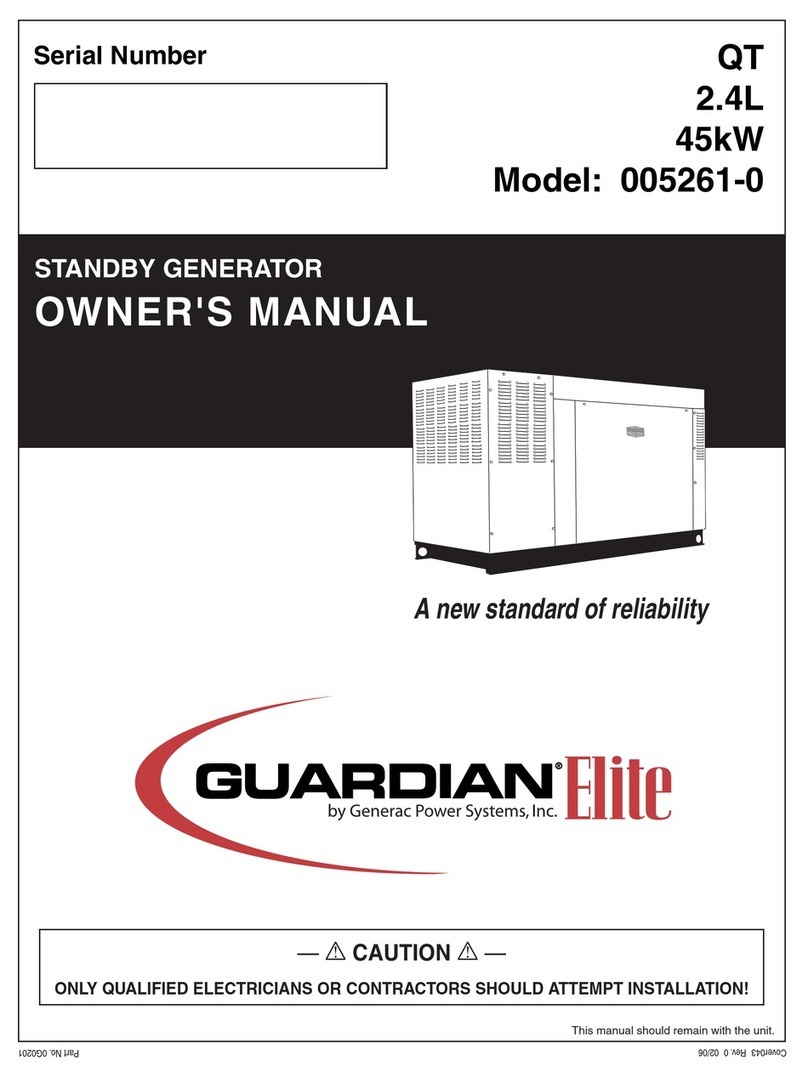
Generac Power Systems
Generac Power Systems 005261-0 owner's manual
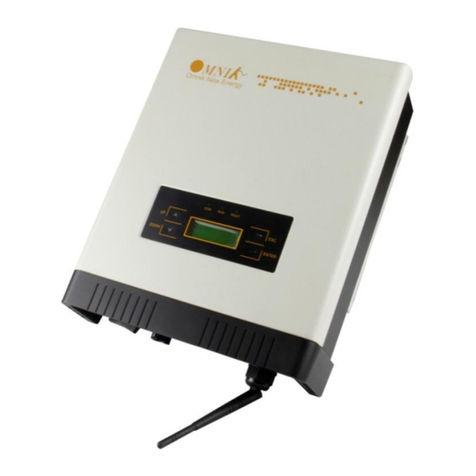
Omnik
Omnik Omniksol-1k-TL2 user manual

Mitsubishi
Mitsubishi FR-A740-00023-EC instruction manual
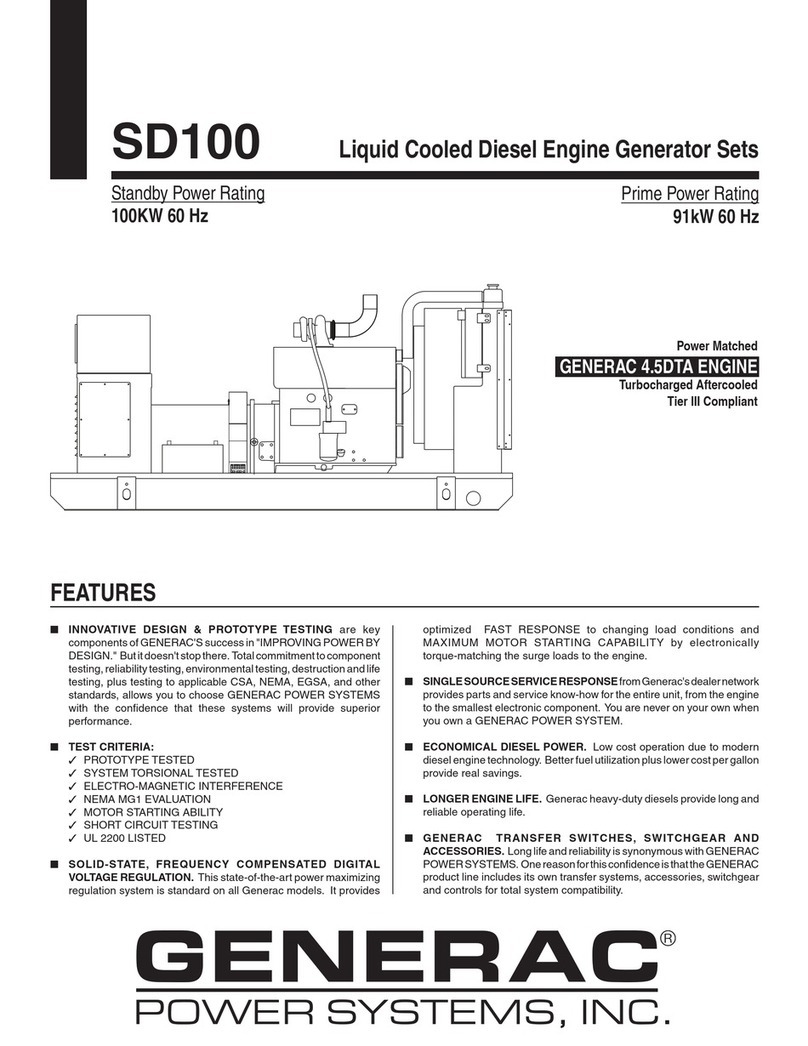
Generac Power Systems
Generac Power Systems SD100 Specifications

Mitsubishi Electric
Mitsubishi Electric FR-A760 Series instruction manual
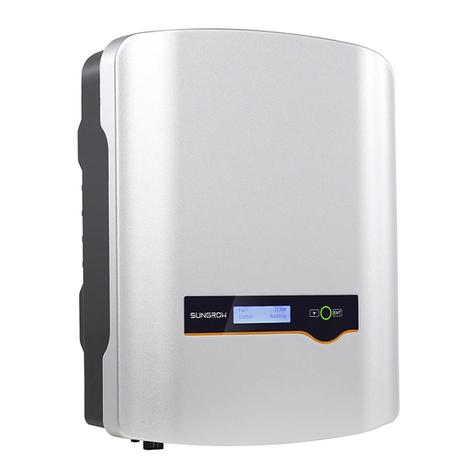
Sungrow
Sungrow SG2K-S user manual

Mitsubishi Electric
Mitsubishi Electric FR-E720-0.1K(SC) instruction manual
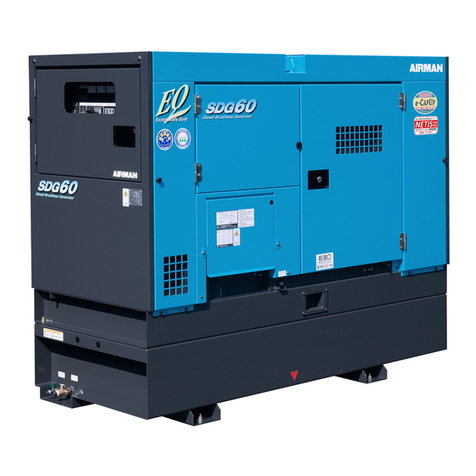
AirMan
AirMan SDG60S-7A6 instruction manual
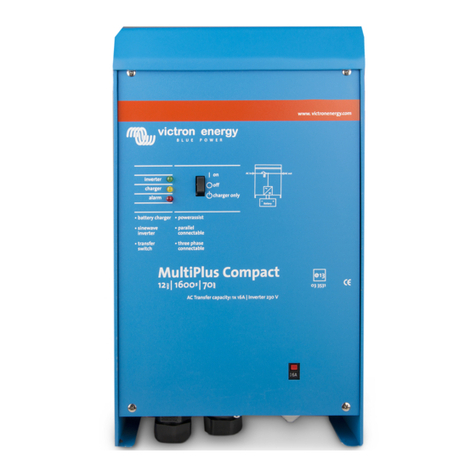
Victron energy
Victron energy EasySolar 12/1600/70 manual
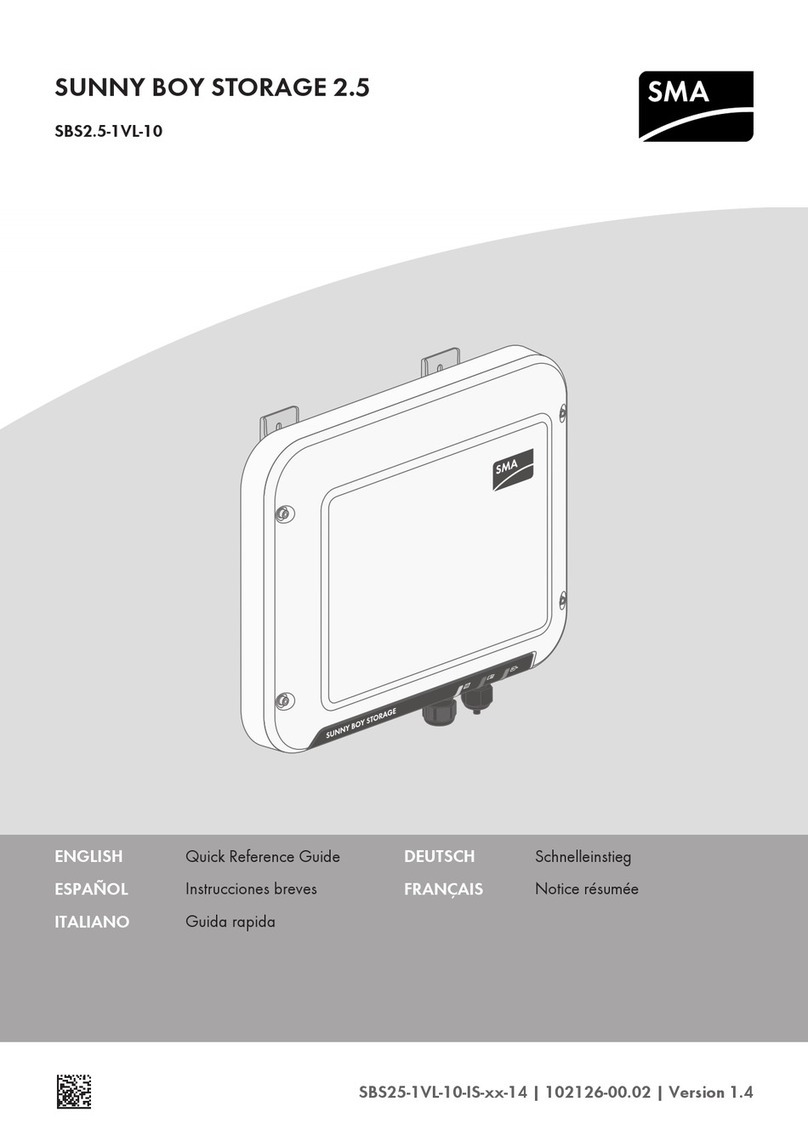
SMA
SMA SUNNY BOY STORAGE 2.5 Quick reference guide
